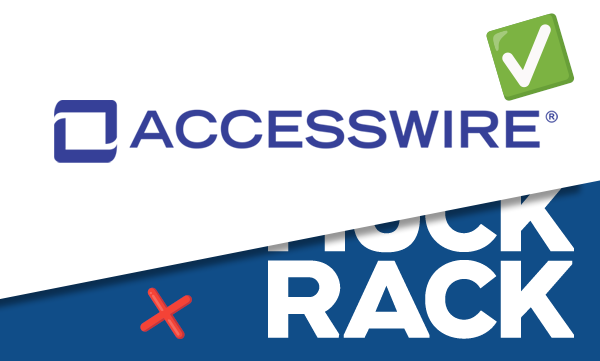In today’s fast-paced digital landscape, Public Relations (PR) is more than just crafting the perfect press release or building relationships with media outlets. It’s about delivering measurable results that prove its value to brands and businesses. With the rise of data-driven strategies, PR professionals are now leveraging powerful insights to demonstrate just how essential PR is to long-term business success.
Here’s how data is helping PR evolve—and why it’s more important than ever for brands to harness it.

1. Data Transforms PR from an Art to a Science
Historically, PR has been viewed as a “soft” strategy—an art form that relies heavily on relationships, intuition, and creativity. While those aspects still hold true, the integration of data has brought scientific precision to the field. Data gives PR professionals the ability to track, analyze, and quantify the impact of their efforts.
For example,
media monitoring tools can track how often a brand is mentioned in articles, blogs, or social media posts. They can also measure the
sentiment of these mentions—whether the tone is positive, negative, or neutral. With these insights, PR teams can make more informed decisions, adjust their strategies in real-time, and prove how their efforts are driving brand visibility.
2. Measuring the Earned Media Value in PR
A key challenge in PR has always been quantifying the value of earned media—the free coverage that brands receive through mentions, interviews, or features. However, data analytics tools now allow PR teams to assign a dollar value to this coverage by measuring factors like reach, engagement, and the potential ad equivalency (how much the same coverage would have cost if it were an ad).
By translating media coverage into concrete metrics, PR professionals can show brands the
financial value of earned media, proving that PR campaigns deliver measurable ROI. For example, if a single media mention reaches 100,000 potential customers, brands can now calculate the equivalent advertising spend to reach the same audience—making it easier to justify the investment in PR.
3. Sentiment Analysis: Tapping into Consumer Perception in Public Relations
Sentiment analysis is another powerful data tool that highlights the importance of PR. It’s no longer enough to simply know that people are talking about your brand—you need to know how they’re talking about it. By analyzing online conversations, social media posts, and press coverage of your business, PR professionals can gauge the tone of public sentiment.
A positive sentiment shows that the brand is resonating well with its audience, while negative sentiment could indicate a crisis in the making. This real-time data allows PR teams to adapt quickly, address potential issues before they escalate, and create campaigns that foster a stronger emotional connection with consumers.
By consistently monitoring sentiment, brands can stay proactive rather than reactive, allowing them to craft a narrative that supports brand reputation and fosters trust.
4. Proving the Impact of PR on Sales Performance
In today’s data-rich environment, PR professionals can now demonstrate a direct link between earned media and sales performance. By integrating PR campaigns with digital marketing tools like Google Analytics or CRM software, brands can track customer behavior from the moment they engage with media content to when they make a purchase.
For instance, if a brand receives a feature in a major publication and sees a subsequent spike in website traffic and sales, PR professionals can attribute that increase to the media exposure. This is especially useful when measuring the success of a
product launch,
store opening, or
brand announcement. Data shows how PR drives not only brand awareness but also meaningful action from consumers.
5. Real-Time Strategy Adjustments in Public Relations Campaigns
Data empowers PR professionals to adjust their strategies in real-time. Campaigns are no longer static. Through analytics dashboards, media monitoring platforms, and audience tracking tools, PR teams can measure the effectiveness of their efforts as they unfold.
Let’s say a brand launches a PR campaign that’s not generating the expected buzz. Data analytics can pinpoint where the campaign is falling short—whether it’s the messaging, the target audience, or the timing. With these insights, PR teams can make
real-time adjustments to salvage the campaign, boost its visibility, and ensure it meets the desired objectives.
This data-driven agility is crucial in today’s fast-moving media environment, where news cycles change rapidly and consumer behavior can shift overnight.
6. Data Demonstrates the Long-Term Value of PR Investments
One of the biggest challenges in PR is that results are often long-term rather than immediate. While advertising can deliver quick results, PR is about building relationships, trust, and credibility over time. This is where data comes in, helping brands understand the cumulative impact of their PR efforts.
For example,
share of voice (SOV) analysis measures how much a brand is mentioned in comparison to its competitors. Over time, an increase in SOV correlates with greater brand awareness, trust, and market dominance. By tracking these long-term metrics, PR professionals can prove that sustained PR investments lead to increased market share and stronger brand equity.
Conclusion: Data is Crucial for Showing PR Success
The role of PR in business has always been critical, but thanks to the integration of data, PR professionals now have the tools to prove their value in concrete terms. Data not only enhances the way PR teams operate, but it also helps brands understand why investing in PR is essential for long-term success.
Whether it’s through
media monitoring,
sentiment analysis, or
tracking earned media value, data is making PR more strategic, measurable, and indispensable. Brands that embrace data-driven PR are better positioned to navigate today’s media landscape and achieve lasting results.






Similar Blog Posts



PRODUCTS
ACCESSWIRE | All Rights Reserved

